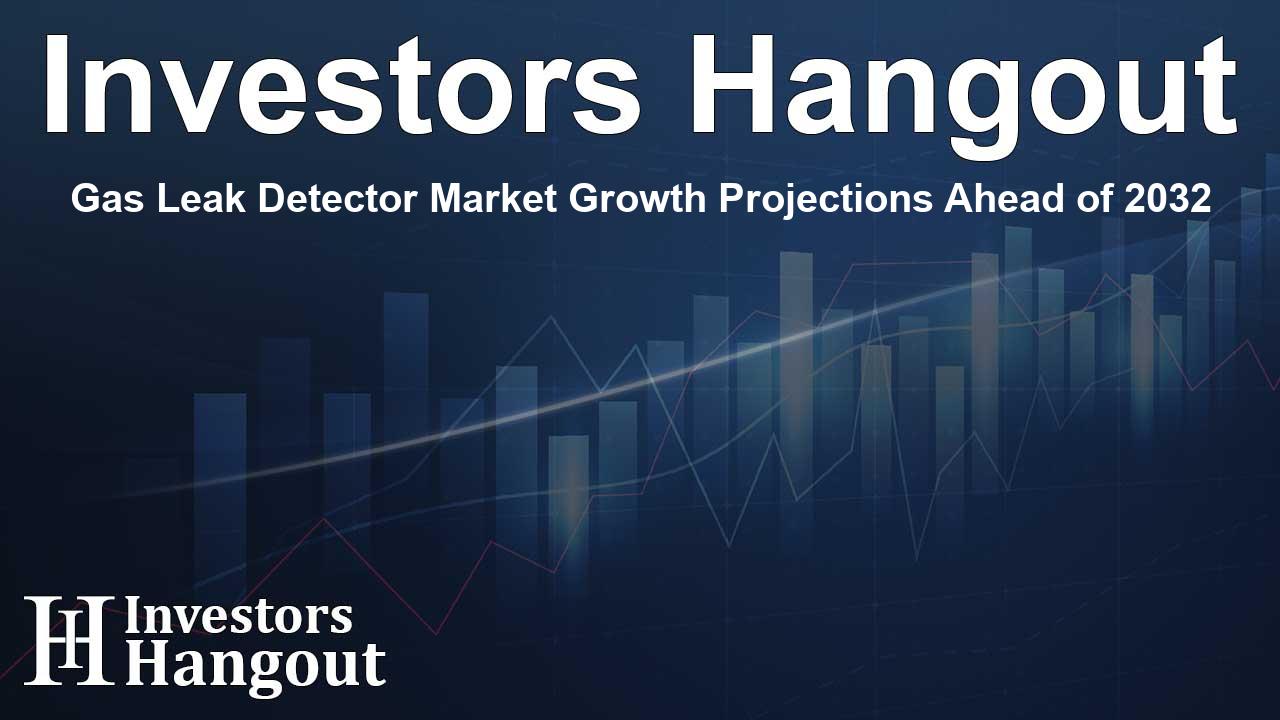Gas Leak Detector Market Growth Projections Ahead of 2032

Gas Leak Detector Market Overview
The gas leak detector market is gaining traction, with an estimated value of USD 5.06 billion in 2023. According to recent research insights, it is expected to grow to USD 8.84 billion by 2032. This significant growth reflects a robust compound annual growth rate (CAGR) of 6.4% from 2024 through 2032. The continuous advancements in technology and increasing safety regulations are key factors driving this market.
Technological Advancements Fueling Growth
One of the main drivers behind the rapid expansion of the gas leak detector market is the rise of stringent safety laws in industrial settings, coupled with innovations in gas detection technology. The integration of smart technology, such as IoT-enabled detectors, has revolutionized traditional gas detection methods. These advanced solutions facilitate real-time monitoring and greatly enhance detection accuracy. Furthermore, the demand for reliable gas detection solutions is growing among businesses keen to uphold safety standards, particularly in sectors dealing with oil, gas, and chemical production.
The Role of IoT in Enhancing Safety
The volatility in energy prices, particularly within the oil and gas sectors, underlines the necessity for dependable gas detection solutions. IoT technologies play a crucial part in modern gas detection, proving effective for predictive maintenance and real-time analysis. Automated gas detection systems empower organizations to maintain safe operational environments, making connected gas detectors that utilize near-infrared spectroscopy increasingly essential. These detectors play a critical role in monitoring gas levels, particularly methane, which poses serious safety hazards.
Market Segmentation and Key Players
The market can be segmented based on various criteria such as sensor type, end-use, and application. Among sensor types, infrared sensors hold notable market dominance, with a significant share attributed to their precision and reliability in detecting flammable gases without the need for frequent maintenance.
Leading Companies in the Gas Leak Detector Market
Major players within this sector include well-established companies such as MSA - The Safety Company, Honeywell International Inc., and Drägerwerk AG. These companies are continuously innovating to retain their competitive edge and address the growing market demand for effective gas detection technologies.
End-User Applications Driving Demand
The industrial sector currently dominates the gas leak detector market. Rapid urbanization and industrialization, especially in emerging markets, have propelled the adoption of gas detectors in various applications. Furthermore, these detectors are fundamental tools in the mining industry, where the risk of methane leaks poses serious dangers.
Regional Insights
When examining regional performances, the Asia-Pacific region has emerged as a market leader, capturing a 33% share in 2023, primarily due to the rising demand for portable gas detectors. Meanwhile, North America exhibits the highest CAGR, driven by strict regulatory frameworks and increased awareness surrounding safety in gas-utilizing industries.
Recent Developments in the Market
In early 2024, significant industry movements were observed when ABB acquired SEAM Group. This acquisition aimed to enhance ABB's electrification services by integrating new expertise in energy management and safety protocols. Such developments reflect ongoing trends toward comprehensive safety solutions across various market sectors.
Key Takeaways from Market Analysis
- The gas leak detector market is poised for substantial growth, underpinned by elevated safety regulations and technological advancements.
- Innovations in sensor technology, particularly IoT applications, play a crucial role in evolving market dynamics.
- Stakeholders must stay abreast of the latest trends to maintain a competitive edge in this rapidly changing industry.
Frequently Asked Questions
What is the projected market size for gas leak detectors by 2032?
The gas leak detector market is anticipated to grow to USD 8.84 billion by 2032.
What factors are contributing to the growth of the gas leak detector market?
Key factors include technological advancements, stricter safety regulations, and heightened awareness regarding safety in industrial environments.
Which companies are leading the gas leak detector market?
Major players include MSA - The Safety Company, Honeywell International Inc., and Drägerwerk AG.
What region holds the largest share in the gas leak detector market?
Asia-Pacific currently leads the market with a significant share due to the growing adoption of portable gas detection solutions.
How important is IoT technology for gas leak detectors?
IoT technology is critical as it enhances real-time monitoring capabilities and predictive maintenance, significantly improving safety protocols.
About Investors Hangout
Investors Hangout is a leading online stock forum for financial discussion and learning, offering a wide range of free tools and resources. It draws in traders of all levels, who exchange market knowledge, investigate trading tactics, and keep an eye on industry developments in real time. Featuring financial articles, stock message boards, quotes, charts, company profiles, and live news updates. Through cooperative learning and a wealth of informational resources, it helps users from novices creating their first portfolios to experts honing their techniques. Join Investors Hangout today: https://investorshangout.com/
Disclaimer: The content of this article is solely for general informational purposes only; it does not represent legal, financial, or investment advice. Investors Hangout does not offer financial advice; the author is not a licensed financial advisor. Consult a qualified advisor before making any financial or investment decisions based on this article. The author's interpretation of publicly available data shapes the opinions presented here; as a result, they should not be taken as advice to purchase, sell, or hold any securities mentioned or any other investments. The author does not guarantee the accuracy, completeness, or timeliness of any material, providing it "as is." Information and market conditions may change; past performance is not indicative of future outcomes. If any of the material offered here is inaccurate, please contact us for corrections.